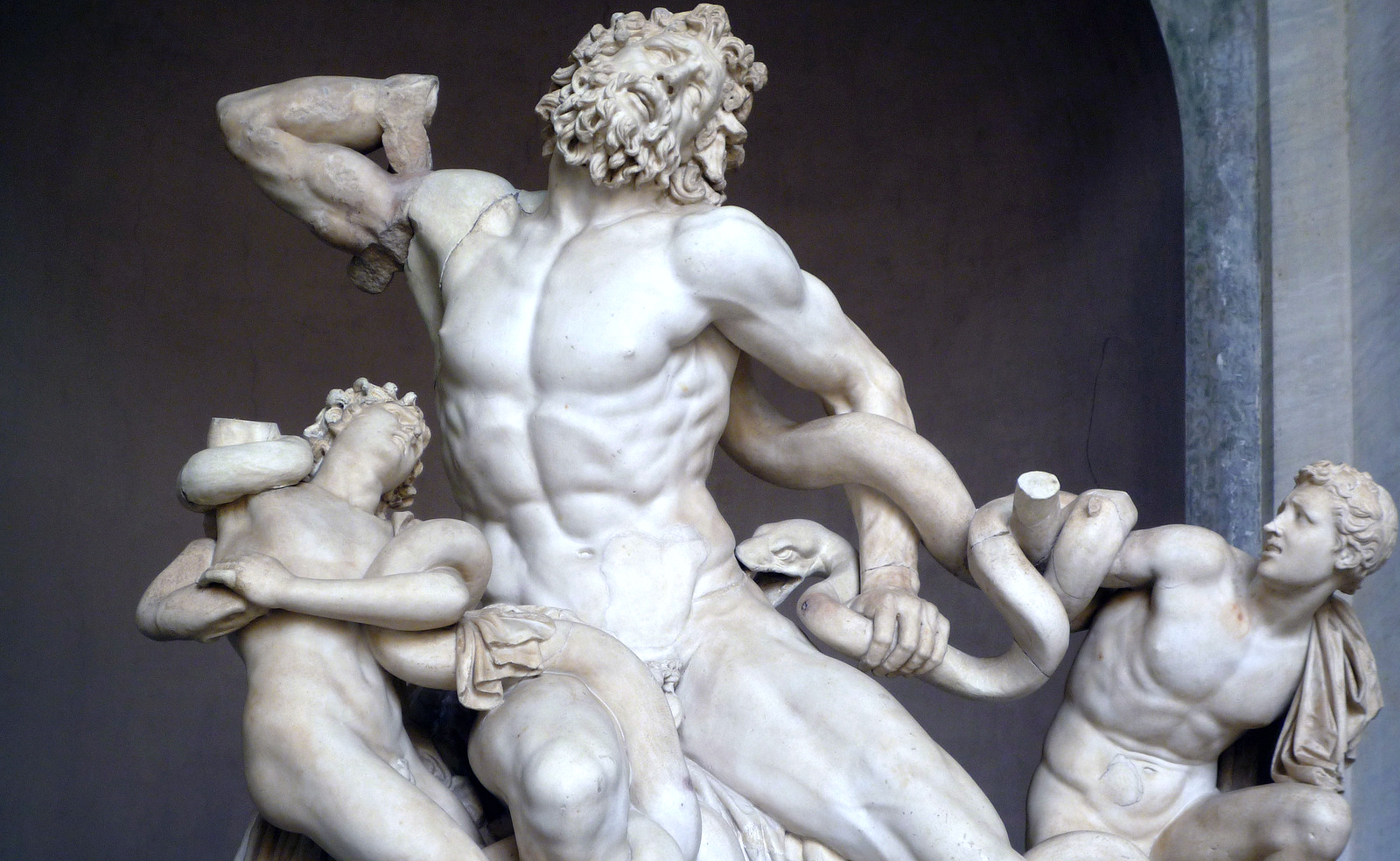Greek Sculpture, Early First Century C.E.

Athanadoros, Hagesandros, and Polydoros of Rhodes, Laocoön and his Sons, early first century C.E., marble, 7’10-1/2″ high (Vatican Museums)
For my second blog post of the week I decided to do it on “rhythmic chaos of the Laocoön” because of a couple different reasons. Obviously right off the bat, it looks like there is a lot going on. Also, after doing some research and readings, this artwork gives us a lot of information regarding the ancient Greeks traditions and beliefs. Through this sculpture you can truly see that the Greeks put a lot of attention to detail in their artwork regarding emotion. With this specific piece you get the feeling that Laocoon (middle) is in a battle with this large serpent and straining to kill it, while his two sons in distress trying to help him. You can also see that the sons are missing some limbs, and this could be for a couple of reasons. The obvious explanation is that they could have broken off over time due to weather or transportation, but the other explanation would be that it was crafted like that on purpose. The reason why some Sculptures were created without limbs was, “the fact that the figures are often missing limbs is the result of the ravages of time” according to smart history. It truly is crazy to think that these artists created these sculptures to hopefully show the world someday how violent things actually were during these times of civilization.
Something that is really interesting to note is that most of the ancient Greek sculptures were created with the material bronze but this on specifically is made out of marble. According to our reading, “Bronze is a material that you can melt down and reuse. So, the original sculptures don't really survive. The Romans really admired Greek art, so they made lots and lots of copies.” So, it b rings up the question as to why did the ancient Greeks choose to use a material that wouldn’t last over a material Marble) that would last a substantial amount of time longer? The reason why this specific piece was done in marble was because the Greeks typically used marble only for larger sculptures or for architectural purposes.
Smart history Link: https://smarthistory.org/greek_intro/
Gondek, Dr. Renee M., and Dr. Renee M. Gondek. “Introduction to Ancient Greek Art.” Smarthistory, smarthistory.org/greek_intro/.
Our original Reading: greece and etruscans transcript.docx

I was also very interested in this art work while doing my own research. The way the Greek's made GIANT 7+ ft tall statues of marble is incredible to me. The fact that they've held up for so long and still look so new and pristine is mind blowing. I will agree that the emotion that these artist were able to create is so impressive. I heard that a lot of the time pieces of art are damaged from battles or even thieves.
ReplyDeleteThis comment has been removed by the author.
ReplyDeletePlease ignore the removed comment of mine if you can see it, mistakes were made. ANYWAYS
ReplyDeleteThis piece is so surreal, it is definitely a wonderful work of art. It in itself tells a story, it shows a struggle between so many different entities. I love that a lot of the works back in those days were fully sculpted from marble blocks. Great piece!
Hey Justin!
ReplyDeleteYour blog post was very interesting, it's neat that the Romans used Bronze, a material that can be melted and reused to create copies of sculptures. I wonder if they just melted down a bunch of old weaponry/shields/armor to create copies of sculpture because they didn't have marble available? Or maybe they made casts of the original sculptures and used bronze to make them? I don't know, but it's neat!
It is always interesting to me to hear information of these statues given the amount of them and the stories always being unique. Since a lot of the sculpture like you said are bronze they are reused for many things, but to have a sculpture like this that emphasizes so much emotion and attention to detail make me wonder how long it took to make the original piece. Was there any information regarding the artist or how the piece is being preserved now?
ReplyDeleteThe artworks created by the Greeks of this time is truly incredible compared to what was created over the next 1500 years. Their work with marble and bronze wouldn't be rivaled until the Italian renaissance and the amazing artistic minds of the period. Their techniques must have been incredibly influential on renaissance artists.
ReplyDeleteAnother amazing example of a Hellenistic period sculpture. It shows such understanding of the human anatomy. The movement and stretch in each of their bodies, the captured expression on not just the people but the serpent. Even it’s bodily contortion. The style is so different compared to the prior classical style of Greek sculpture.
ReplyDelete